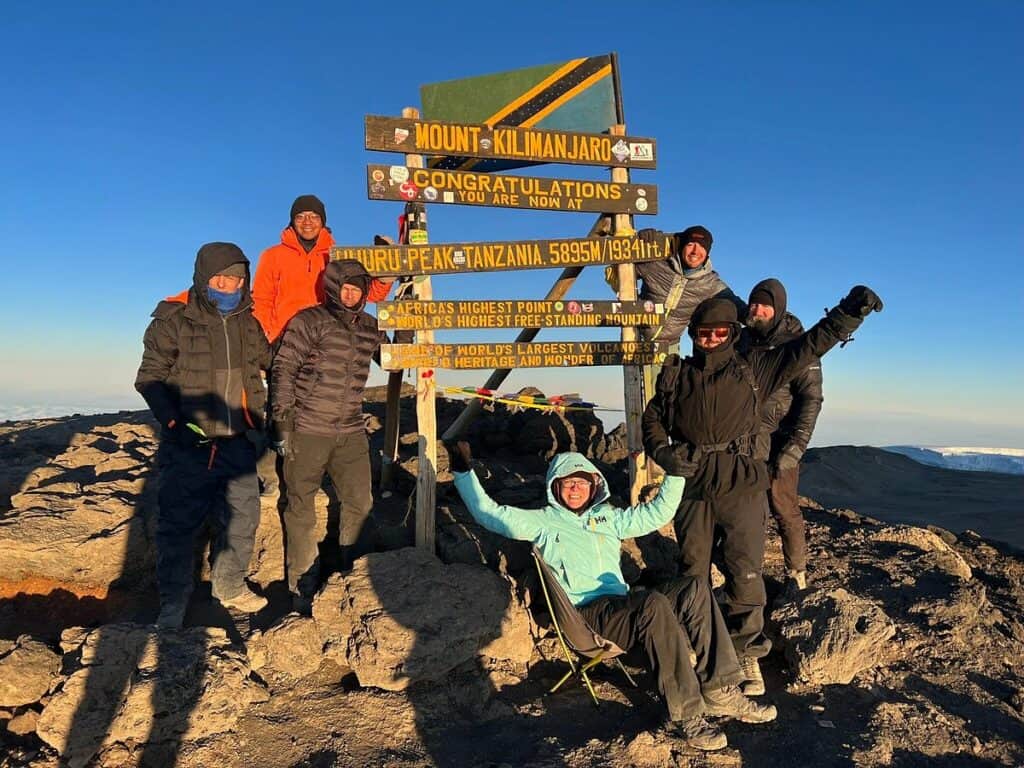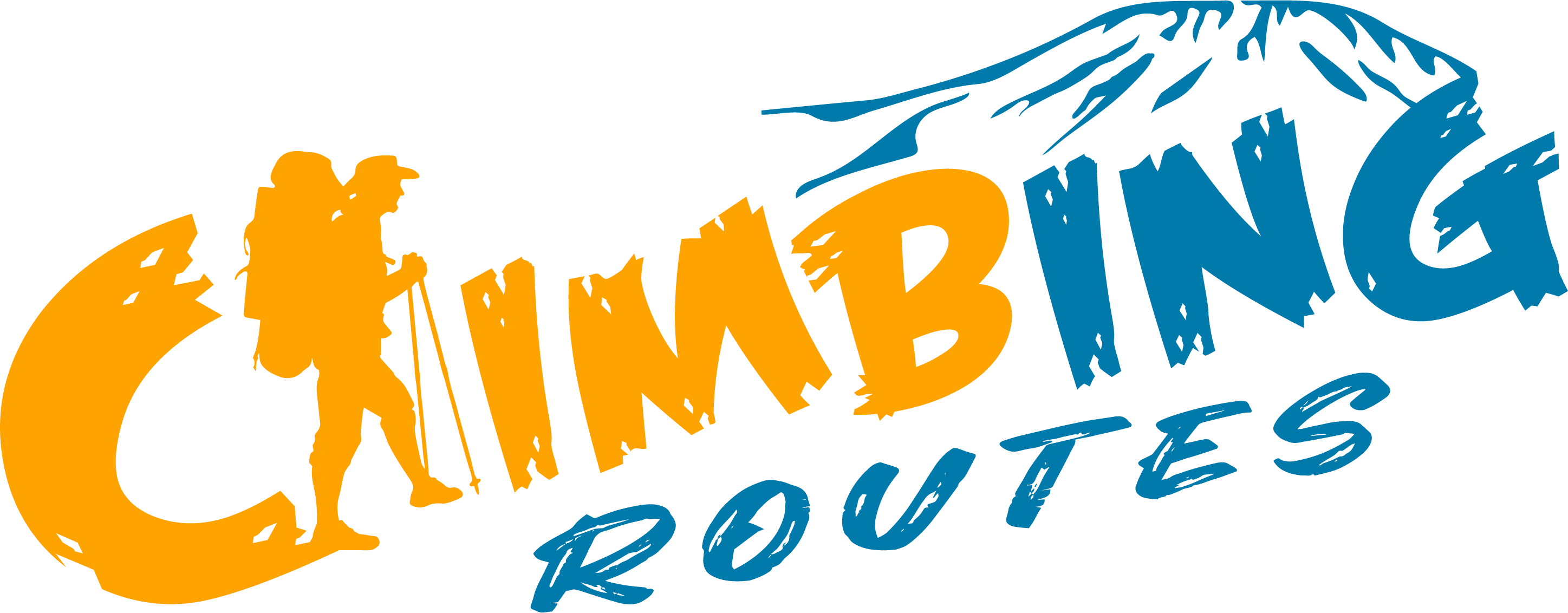
Mount Kilimanjaro is famous for being the home of Africa’s highest point and being the tallest free-standing peak in the world. It’s estimated that 30,000 people come every year to climb it. We hear it repeatedly quoted that less than 50% of climbers make it to the peak, suggesting that climbing Kilimanjaro is a difficult achievement.
But more recent statistics suggest that more and more people are reaching the summit every year. So is it getting easier to climb Kilimanjaro? And if not, what explains the high success rates that we see on the mountain today?
Before we go into the history of climbing Kilimanjaro, it is important to discuss Kilimanjaro itself.
Earliest Written Record of Kilimanjaro
The earliest known written record of Kilimanjaro comes from Ptolemy, an Alexandrian mathematician, astronomer, and most importantly in this case, cartographer around 100 AD. He wrote of sailor’s reports of a “Moon Mountain” with references to the Nile, which may indicate Kilimanjaro or any of several other African mountains. Whether or not Ptolemy was, in fact, speaking of Kilimanjaro, nothing more was recorded about the mountain for over 1,700 years.
In 1848, a German missionary named Johannes Rebmann became the first European to officially report the existence of Kilimanjaro. Unfortunately, his reports were considered unreliable by the Royal Geographical Society, and confirmation of Rebmann’s claims were not made until 1861.
AfrikaForscher” width=”727″ height=”850″ data-lazy-srcset=”https://www.ultimatekilimanjaro.com/wp-content/uploads/2016/02/Karl_Klaus_von_der_Decken_1833-1865AfrikaForscher.jpg 727w, https://www.ultimatekilimanjaro.com/wp-content/uploads/2016/02/Karl_Klaus_von_der_Decken_1833-1865AfrikaForscher-257×300.jpg 257w” data-lazy-sizes=”(max-width: 727px) 100vw, 727px” data-lazy-src=”https://www.ultimatekilimanjaro.com/wp-content/uploads/2016/02/Karl_Klaus_von_der_Decken_1833-1865AfrikaForscher.jpg” /></picture></figure>
</div>
<h2 class=) First Ascent of Mount Kilimanjaro
First Ascent of Mount Kilimanjaro
Almost no time passed before explorers began making attempts at the peak. Prussian officer Baron Karl Klaus von der Decken made an attempt in 1861, along with a crew of fifty porters, but bad weather foiled his plans. He made it to only 8,200 ft. He tried again a year later and made it to 14,000 ft before turning back – this time due to heavy snow.
Hungarian Count Sámuel Teleki and Austrian Lieutenant Ludwig von Höhnel were a bit more successful in 1887; Teleki and his crew of 300 porters made it to 17,400 ft before stopping the expedition due to ear aches.
That same year, German geology professor Hans Meyer reached the lower edge of the ice cap on Kibo, but was not equipped to traverse the ice on the upper slopes. So he turned back.
 100vw, 700px” data-lazy-src=”https://www.ultimatekilimanjaro.com/wp-content/uploads/2016/02/kili_history_08.jpg” /></picture></figure>
</div>
<p><strong>Numerous others tried and failed to reach the coveted peak until 1889</strong>.</p>
<p>That year, Hans Meyer made his third attempt at the summit with the assistance of Ludwig Purtscheller, an Austrian mountaineer. They established several camps stocked with food and supplies ahead of time to allow for multiple attempts without making a full retreat. Finally, <strong>on October 6, 1889, the pair reached Kibo’s summit and were the first to confirm that it had a crater.</strong></p>
<h2 class=) Climbing Kilimanjaro Today
Climbing Kilimanjaro Today
 100vw, 1024px” data-lazy-src=”https://www.ultimatekilimanjaro.com/wp-content/uploads/2023/09/caption-15-1024×640.jpg” /></figure>
<p><strong>So why did it take several trained, experienced explorers, with the support of large mountain crews multiple tries to reach the peak of Kilimanjaro?</strong></p>
<p>The simple answer – snow and ice.</p>
<p>In Meyer and Purtscheller’s day, there was a layer of ice over the top of the mountain, so thick that they had to spend quite a bit of time carving footholds in it just so they could proceed. These days, the ice has retreated, allowing for reliable routes to the different peaks of the three volcanic cones. One can climb to the top without ever stepping on snow.</p>
<p>But while snow and ice no longer are significant obstacles in the ascent of Kilimanjaro, the more modern barrier is <a href=) altitude sickness. Because the early explorers had to battle the grueling terrain, they were encumbered, making slow progress on their ascent. They spent many days gradually gaining altitude and becoming acclimatized.
altitude sickness. Because the early explorers had to battle the grueling terrain, they were encumbered, making slow progress on their ascent. They spent many days gradually gaining altitude and becoming acclimatized.
Ironically, the relatively easy paths to the top today have resulted in a different obstacle. Altitude sickness is now the main reason for unsuccessful summits.
 100vw, 598px” data-lazy-src=”https://www.ultimatekilimanjaro.com/wp-content/uploads/2016/02/Marangu.jpg” /></picture></figure>
</div>
<h2 class=) The Importance of Route Selection
The Importance of Route Selection
Today’s well maintained routes can be done in as little as 5 days (which we strongly discourage). The original route that Hans Meyer took for the first summit closely resembles the Marangu route being used now. It was also the route that was first used to guide commercial expeditions. For a long time, it was the only route available. But Marangu is not a well planned path. Contrary to belief, it is a difficult route because of this. Even today it has a paltry success rate of 27% when done over 5 days.
When Kilimanjaro’s second route, Machame, was established, it was an improvement over Marangu. But it still has a poor success rate of only 44% over 6 days.
Kilimanjaro’s reported overall success rate of 50% is a result of the past popularity of these two routes. However, clients nowadays are avoiding 5 and 6 day routes.
There are many more options available to today’s climbers. The new routes on Kilimanjaro are designed to control the flow of visitors and have more reasonable elevation gains from day to day, thus reducing the likelihood of severe altitude sickness. The longer routes that are used today, like the 8 day Lemosho and 9 day Northern Circuit, have overall success rates of over 85%.
 100vw, 1024px” data-lazy-src=”https://www.ultimatekilimanjaro.com/wp-content/uploads/2016/02/caption-14-1024×640.jpg” /></figure>
</div>
<p>More and more people are choosing these routes with the education of reputable operators who steer clients away from the 5 day Marangu and 6 day Machame routes. Therefore, the percentage of total climbers who reach the summit is increasing.</p>
<blockquote class=)
We believe the 50% success rate for climbing Kilimanjaro is outdated.
As the years passed, more and better routes were established. The new routes on Kilimanjaro are designed to control the flow of visitors and have more reasonable elevation gains from day to day, thus reducing the likelihood for altitude sickness (though AMS is still the biggest risk while climbing Kilimanjaro). The longer routes that are used today, like the 8 day Lemosho and 9 day Northern Circuit, have success rates of over 85%.
More and more people are choosing these routes with the education of reputable operators who steer clients away from the 5 day Marangu and 6 day Machame routes. Therefore, the percentage of total climbers who reach the summit is increasing. So it’s not that the mountain is becoming easier, but rather that people are making better route decisions. This is a welcome trend on Kilimanjaro, as it is safer and more fulfilling for everyone involved.
The current success rate on the mountain is probably closer to 70-75%.

So How Hard is it to Climb Kilimanjaro?
It depends on the route you choose. Chances are, if you climb on a longer route with a professional outfitter like Ultimate Kilimanjaro, you’ll make it to the top – and unlike Hans Meyer, you’ll do it in just one try.


